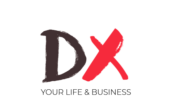When I started my first business back in 2001, I had no idea what a Chart of Accounts was.
There was no QuickBooks. No YouTube tutorials. No templates to follow.
Just me, my brother, and a notebook.
We were lucky—our uncle supported us financially by wiring money through Western Union. Every time I picked up the funds, I’d go to the bank, deposit the money, and start writing checks for rent, inventory, and supplies. Then I’d record everything—manually—in a notebook.
I didn’t know what a ledger meant. I didn’t know what an “accounting system” looked like.
But I did my best to track every transaction. And eventually, I realized something powerful:
Accounting is just the art of recording transactions.
Why the Chart of Accounts Changed the Way I Do Business?
As my business grew, so did the complexity of my finances. That’s when I discovered the Chart of Accounts—a simple but powerful way to organize all your financial transactions into categories.
If you’ve ever used labeled envelopes or budget jars to manage your money—one for groceries, one for rent, one for savings—you already understand the concept.
The Chart of Accounts is the business version of that system.
What Is a Chart of Accounts?
A Chart of Accounts (COA) is a complete list of every account your business uses to track its money. It’s the foundation of your bookkeeping system.
Each account represents a category for your financial transactions. These categories are grouped into five main types:
- Assets – What your business owns (e.g., cash, equipment, inventory)
- Liabilities – What your business owes (e.g., loans, accounts payable)
- Equity – The owner’s interest in the business
- Income or Revenue – Money coming into the business
- Expenses – Money going out of the business
With a well-organized Chart of Accounts, you can:
- Track income and expenses accurately
- Understand your cash flow
- Create financial statements like your balance sheet and income statement
- Make smarter business decisions
Why Entrepreneurs Should Care About the Chart of Accounts?
You don’t need to be an accountant to use the Chart of Accounts.
In fact, the earlier you learn to organize your records, the easier it becomes to:
- Stay compliant with tax laws
- Spot wasteful spending
- Set realistic budgets
- Plan for growth
Without a Chart of Accounts, your business finances can feel like loose change in a backpack—disorganized, messy, and easy to lose track of.
But with it? Everything has a label, a place, and a purpose.
How to Create a Simple Chart of Accounts for Your Business?
Here are 5 beginner tips to help you get started:
1. Start with the 5 Main Categories
Use these as your main sections:
- Assets
- Liabilities
- Equity
- Income
- Expenses
2. Add Sub-Accounts Under Each Category
Examples:
Income: Sales, Service Revenue
Expenses: Rent, Utilities, Salaries, Marketing
3. Use Account Numbers
Assign account numbers to make sorting easier. Example:
- 1000–1999 for Assets
- 2000–2999 for Liabilities
- 3000–3999 for Equity
- 4000–4999 for Income
- 5000–5999 for Expenses
4. Keep It Simple at First
Don’t overcomplicate it. Start with what you need now—you can always add more accounts later as your business grows.
5. Link It to Your Book of Accounts
Your Chart of Accounts should guide the way you record transactions in your:
- Journal entries
- General ledger
- Cash receipt and disbursement books
Want to Learn More? Check Out My Accounting Starter Course
If you’re a freelancer, small business owner, or entrepreneur who wants to understand accounting without the jargon, I created a course just for you:
Accounting Starter Digital Course – Learn More Here
Inside, I’ll walk you through everything—from creating a Chart of Accounts to understanding how money flows in and out of your business. No fluff. Just clarity.
Final Thoughts: Your Chart of Accounts Is Your Money Map
You don’t have to be a numbers person to run a successful business. But you do need to know where your money is going.
The Chart of Accounts isn’t just a spreadsheet—it’s your financial map. And every successful entrepreneur I know?
They follow the map.
